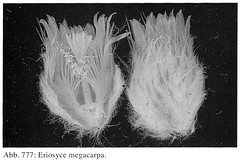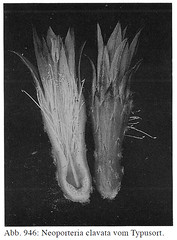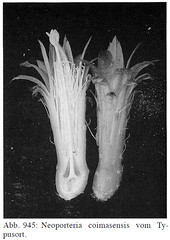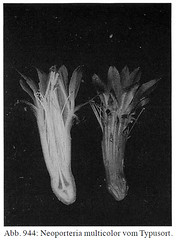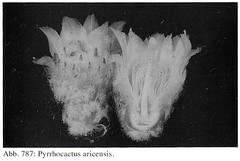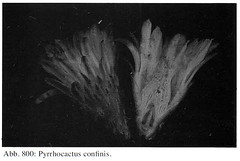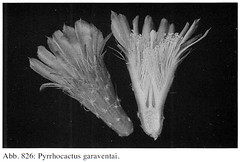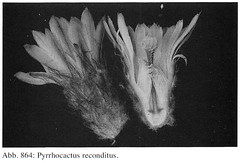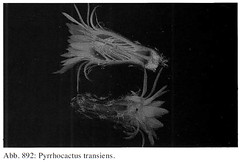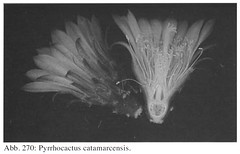I have now read, amongst other things, a pdf of “Reunion of the Genus Neoporteria” by J. D. Donald and G. D. Rowley which is published in two parts in The Cactus and Succulent Journal of Great Britain: 1966. For the most part their lumping of the old seven genera seems to be sensible as well, and the paper seems to form a balance point between the older over-splitting generation and the newer over-lumping generation.
But this still left me confused. The genus, or genera, have so many synonyms, sub-species, and varieties that I have little idea how many plants there really are. I’m not sure if it was DaveW, or DaveW quoting Ferryman, but it seems that at least one of the early writers gave a species or variety name to every minor difference he saw. I know that Ritter was immersed in the Chilean landscape for many years, and I assume that he became overly familiar with the plants and saw major differences where most of us would be very minor ones.
The lumping of everything into Eriosyce hasn’t helped either. I have therefore put the following together to help myself work things out, as I find it easier to remember things one I have written them out. Maybe it will be of use to other people, maybe not, but hopefully so.
I have listed out every species accepted by Donald and Rowley (D&R), then checked them against both Cactus Guide and Llifle to see if the species seems to still generally accepted or not (mostly not as far as I can tell). I have also added the Eriosyce that are not listed by D&R either because they fall outside of Neoporteria, they did not consider them to be a valid species, or because they have been found since. The only problem I’ve had is with Neoporteria subg Pyrrhocactus series C – Reicheocactus. I’m not sure exactly what cactus this was originally referring to, but it now seems to be considered part of Eriosyce/Neoporteria odieri. There is some confusion though with Echinopsis famatimensis (formerly known as Echinocactus reichii and Reicheocactus pseudoreicheanus).
I’m still not sure what I think, and know I need to do more reading, but D&Rs sub-divisions seem to make at least some sense. I’m hoping that breaking up the genus in this way, with illustrations, helps me (and maybe other people!) I have learnt that I like “Series A” the most! One thing I haven't done is separate off the taprooted cacti of "Series A" (aka Thelocephala) from the fibrous rooted cacti (aka Horridocactus). I have linked though to photos on the main site only so far.
Any suggested corrections are welcome
Eriosyce
Original Latin description by R A Philippi, 1872. Descripcion de las plantas nuevas incorporatda ultimamente en el herbario chileno. in Anales de la Universidad [of Chile]
Tubus calycinalis supra ovarium productus eoque longior sicut ovarium ipsum sepalis numerosisimis in lana densa elongata absconditis tectus, apice petala a sepalis bene distinta, numerosa cum spinis elougatis tenuibus mixta eademque lana stipata gerit, que tubam supra ovarium productum subæquant sed vix lanam. Stylus cylindricus, fistulosus, apice multifidus stamina aequans. Bacca exsucca parietibus tenuibus, semina innumera, gerens. Fruitex simplicis simus, carnosus, semiglobus, aphyllus, costatus, costis dorso aculeorum fasciculos gerentibus, ut in Echinocactis; a quibus difert: tubo elongato supra ovarium producto, apice spinas cum petalis gerente; bacca exsucca.
Original type species - Eriosyce sandillon (formerley Echinocactus sandillon, described 1847).
English description from Britton and Rose, 1922: The Cactaceae
A very large, globular to thick-cylindric cactus; ribs numerous, very spiny; flowers from the apex of the plant, campanulate, the tube longer than the perianth-segments; outer perianth-segments linear, more or less pungent; inner perianth-segments narrow, acutish; stamens borne near the base of the flower-tube, included; ovary densely clothed with matted wool; fruit oblong, becoming dry, dehiscing by a basal pore, very spiny above; seeds rather large, dull, black-pitted with a subbasal sunken hilum.
D&R demote the original type species, sandillon, to a syn of ceratistes which was described in 1837. Also considered junior is aurata/auratus which was described in 1847.
aurata
First described in 1837 as Echinocactus ceratistes then in 1847 as Echinocactus sandillon, both now seem to be considered invalid leaving the 1937 name Eriosyce aurata to take precedent.
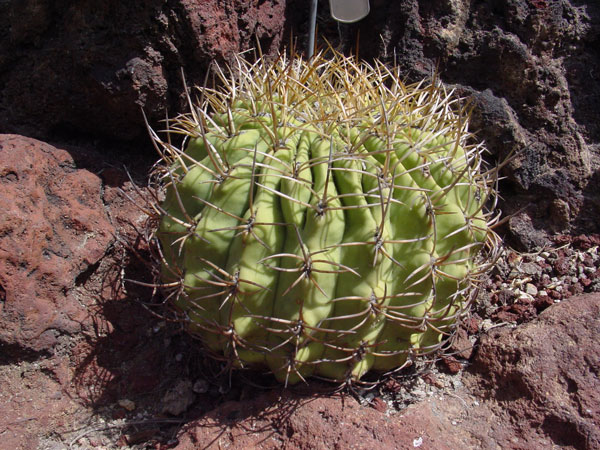
Photo by Daiv Freeman of a cactus at the Huntington Library and Gardens, San Marino, CA
rodentiophila
First described as Eriosyce rodentiophila in 1980 although the name of Rodentiophila atacamensis was given without description in 1957 (nom. nud.)

Photo by Vicent Bueno Ripoll of a plant in habitat
Sub species, variants, synonyms etc
algarrobensis - Seems to be considered a syn of aurata
fleischeriana - A subs of rodentiophila
ihotzkyanae - Seems to be considered a syn of aurata
lapampaensis - Seems to be considered a syn of aurata
megacarpa - Seems to be considered a syn of rodentiophila
spinibarbis - Seems to be considered a syn of aurata
---------------------------------------------------------
Neoporteria
Original description by Britton and Rose, 1922: The Cactaceae
Plants globose to cylindric, sometimes much elongated and then sprawling or pendent over cliffs; more or less hairy at the crown; ribs usually straight, more or less tubercled; flowers from the center of the plant, short-funnelform, usually pinkish or reddish; stigma-lobes cream-colored to reddish; scales on the flower-tube bearing wool and long bristles in their axils; fruit as far as known small, more or less globular, dehiscing by a basal pore; seeds brown, somewhat wrinkled, tuberculate with a somewhat depressed hilum.
Original type species - Neoporteria subgibbosa (formerley Echinocactus subgibbosus)
Also included nidus (combined with senilis), occulta, nigricans [now part of curvispina], jussieui [now part of curvispina], chilensis, fusca [now paucicostata]
B&R also suggest that the following may possibly be included: castaneoides [now subgibbosa], kunzei, neumannianus [now Rebutia neumanniana], neumannianus rigidior, supertextus [now kunzei], malletianus [now Copiapoa malletiana], pepinianus [now Copiapoa coquimbana], and subniger [now Hildmannia subnigra].
chilensis
First described as Echinocactus chilensis in 1898

A photo of one of my plants - chilensis v.albidiflora FK192- newly purchased and young
senilis
First described as Echinocactus senilis in 1886
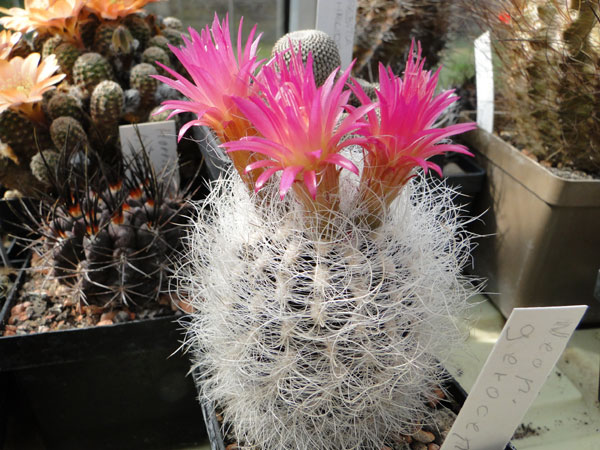
Photo by Jens Karweck of their own plant
sociabilis
First described as Neoporteria sociabilis in 1963
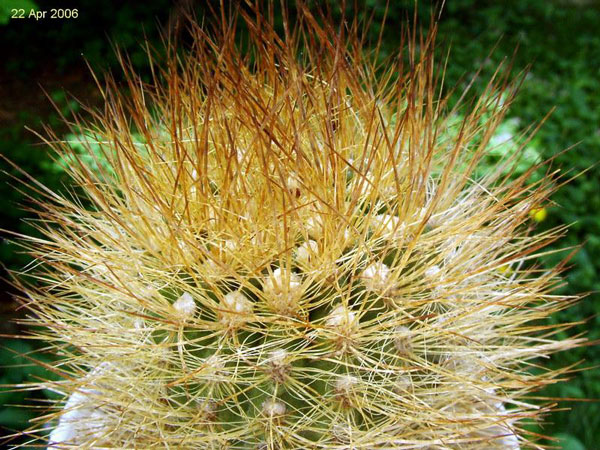
Photo by Süleyman Demir of his own plant
subgibbosa
First described as Echinocactus subgibbosus 1831
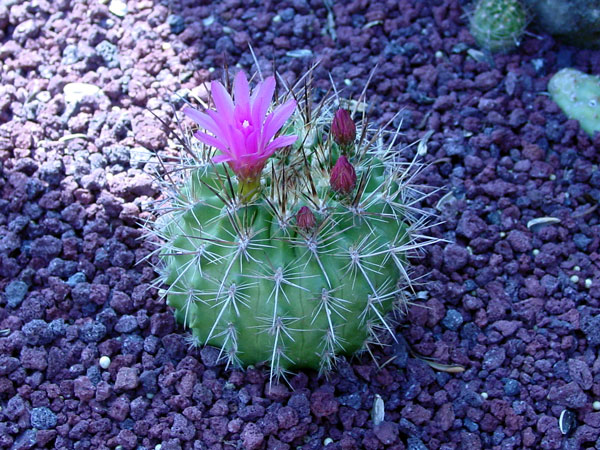
Photo by Daiv Freeman of his own plant
villosa
First described as Cactus villosus in 1839
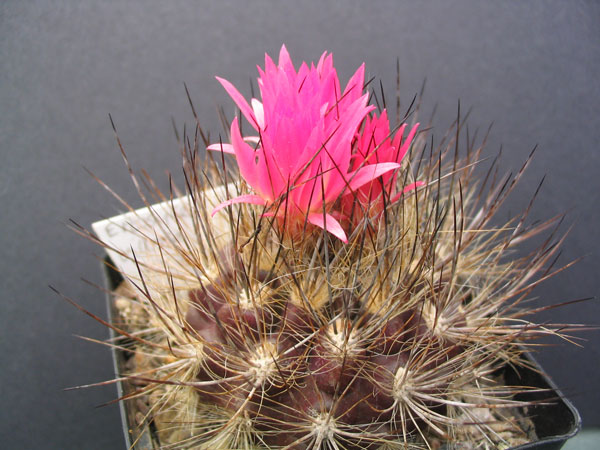
Photo by Phil Crewe of his own plant
Sub species, variants, synonyms etc
clavata - Now considered a ssp of subgibbosa
coimasensis - Seems to be an accepted ssp of senilis
elquiensis - Seems to be considered a syn of senilis
laniceps - Now considered a var of villosa
litoralis - A var of subgibbosa
nigrihorrida - Now considered a syn of subgibbosa
nidus - Seems to have been re-named or absorbed entirely into senilis
rapifera - A syn of subgibbosa subs. clavata
robusta - Seems to be considered a syn of senilis subs. coimasensis
vallenarensis - Seems to be considered a subs of subgibbosa
wagenknechtii - Seems to be considered a syn of subgibbosa subs. clavata or a subs of subgibbosa
---------------------------------------------------------
Horridocactus
Sometimes also called Neochilenia or grouped with the Argentinian plants in Pyrrhocactus [/size]
Horridocactus ?Original? description, Backeberg 1938.
Dies sind die einstigen chilenischen Pyrrhocactus, aber ohne stachliges Ovarium wie bei den argentinischen, das Ovarium ist fast kahl, die Blüte ziemlich groß und radförmig. Nächste Stufe nach Pyrrhocactus? Geographisch sind beide Vorkommen durch die Kordillere getrennt.
Google Translate:
These are the one-time Chilean Pyrrhocactus, but without like the argentinian, the ovary is almost bare, the flower quite large and radoid. Next stage after Pyrrhocactus? Geographically both occurrences are separated by the Cordillera [a chain of mountains].
Type species: Cactus horridus (Echinocactus tuberisulcatus) - now known as Eriosyce curvispina
aspillagai
First described as Echinocactus aspillagai in 1929

A photo by Daiv Freeman of a plant at the Huntington Library and Gardens, San Marino, CA
confinis
First described as Pyrrhocactus confinis in 1961, although it was called Horridocactus confinis in 1957 without description.
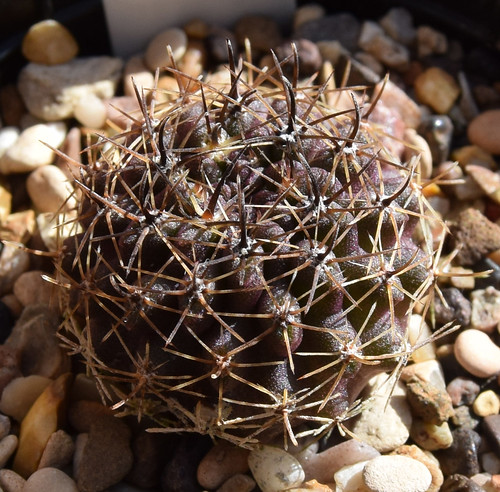
A photo of one of my plants - newly purchased and young
crispa
First described as Pyrrhocactus crispus in 1959
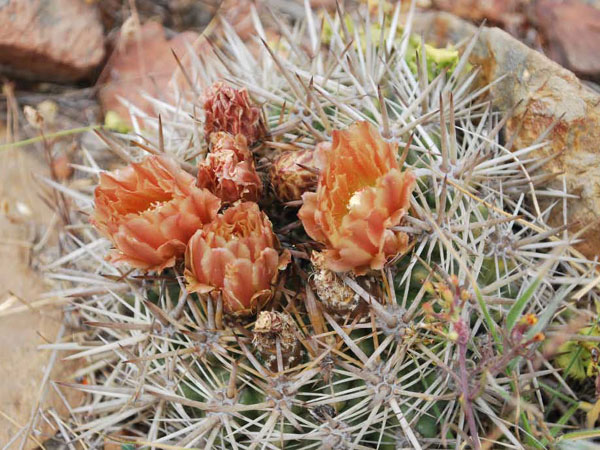
Photo by Tini and Jacob Wijpkema of a plant in habitat
curvispina
First described as Cactus curvispinus in 1829

A photo of one of my plants
engleri
First described as Horridocactus engleri in 1959

Photo by Süleyman Demir of his own plant
heinrichiana

A photo of one of my plants - newly purchased and young
kunzei
First described as Echinocactus kunzei in 1846
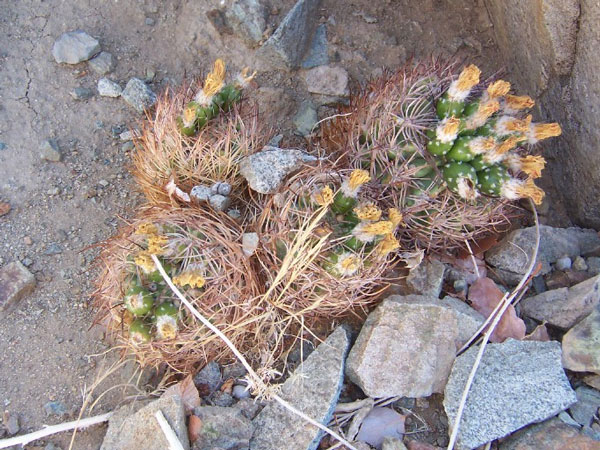
Herman Olivares of a plant in habitat
occulta
First described as Echinocactus occultus in 1860
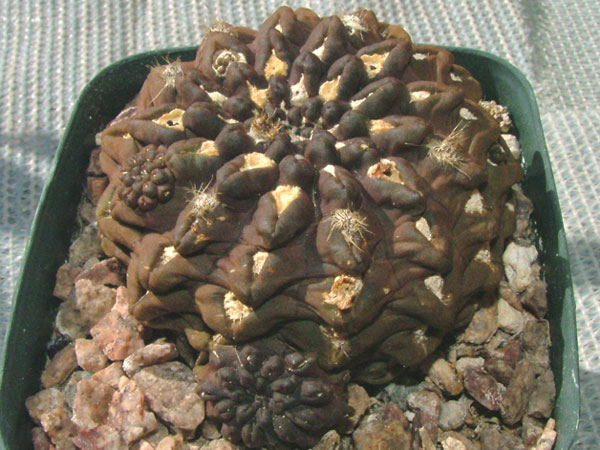
Photo by Andy Cook of his own plant
recondita
First described as Pyrrhocactus reconditus in 1962
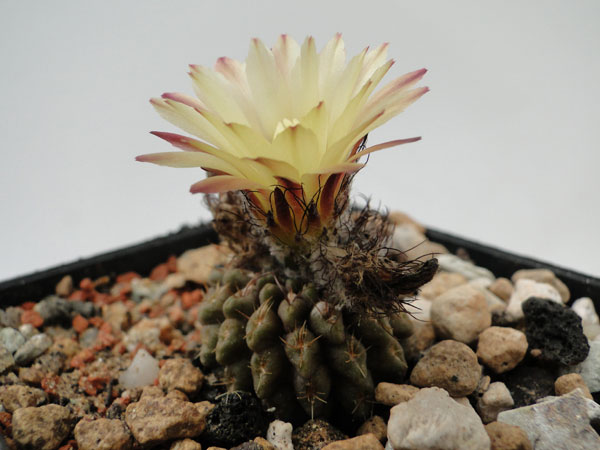
Photo by Jens Karweck of their own plant
taltalensis
First described as Neoporteria taltalensis in 1955
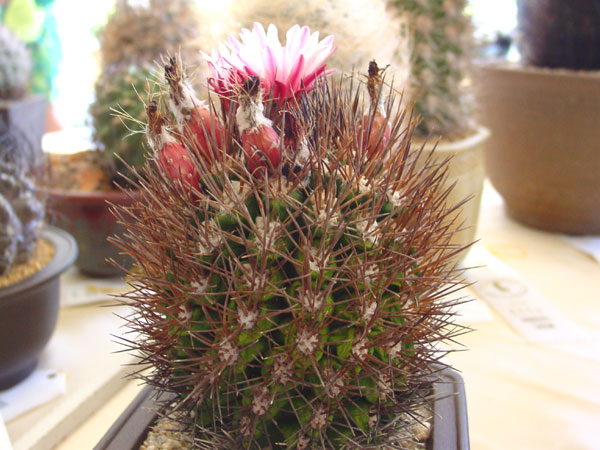
Photo by Daiv Freeman of a plant at the CSSA Show at Huntington Library and Gardens, San Marino, CA
Sub species, variants, synonyms etc
aricensis - Seems to be considered a syn of recondita
armata - Seems to be considered a ssp of curvispina
atroviridis - Seems to have been considered a ssp of crispa at one time, now seems to be considered a ssp of eriosyzoides
calderana - Seems to be a cover-all term for pulchella and pilispina
caligophila - Seems to be considered a syn of iquiquensis, which is itself considered a subs of recondita
carrizalensis - A var of crispa
choapensis - Seems to be considered a syn of curvispina
chorosensis - Seems to be considered a syn of heinrichiana
deherdtiana - Seems to be considered a syn of heinrichiana
dimorpha - Seems to be considered a syn of heinrichiana
echinus - A ssp of paucicostata
eriocephala - Seems to be considered a syn of taltalensis
eriosyzoides - A syn or var of kunzei
floccosa - A ssp of paucicostata
fusca - Seems to be considered a syn of taltalensis subs. paucicostata
garaventae - potentially a subs/var of curvispina
hankeana - Seems to be considered a syn of taltalensis
huascensis - Seems to be considered a var of crispa
intermedia - Seems to be considered a syn of taltalensis
iquiquensis - Seems to be considered a subs of recondita
jussieui - Seems to be considered a syn of curvispina
limariensis - a subs/var of curvispina
maechlerorum - Possibly a ssp of aspillagae
marksiana - Some consider this a ssp of curvispina
mutabilis - A var of curvispina
paucicostata - Seems to be considered a subs of taltalensis
pilispina - Seems to be largely ignored, need more research. Related to taltalensis?
pulchella - Seems to be largely ignored, need more research. Related to taltalensis?
See thread viewtopic.php?f=3&t=39491&p=335730#p335730 for the two above
pygmaea - A ssp of taltalensis
residua - Seems to be considered a syn of recondita
ritteri - Seems to be considered a syn of heinrichiana
robusta - A var of curvispina
rupicola - Seems to be considered a syn of taltalensis
scoparius - Seems to be considered a syn of taltalensis
setosiflora - Seems to be considered a var of heinrichiana
simulans - Seems to be considered a var of heinrichiana by some, a valid sp by others
totoralensis - Seems to be considered a var or subs of crispa
tuberisulcata - Seems to be considered a syn of crispa var. atroviridis or curvispina ssp armata
vexata - A var of recondita
---------------------------------------------------------
Thelocephala
aerocarpa
First described as Chileorebutia aerocarpa in 1959
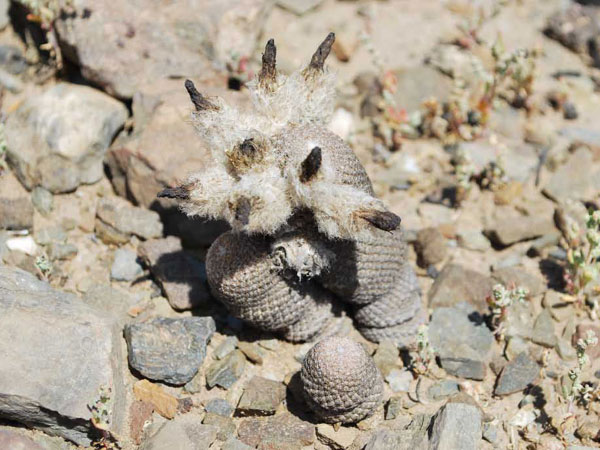
A photo by Tini and Jacob Wijpkema of a plant in habitat
esmeraldana
First described as Chileorebutia esmeraldana in 1963
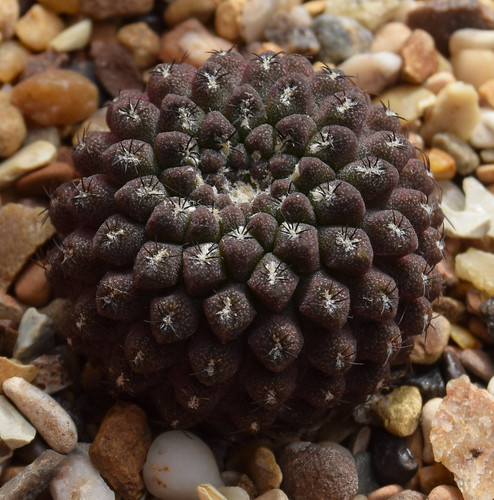
A photo of one of my plants
krausii - Note that there was another cactus within Pyrrhocactus called krausii
First described as Chileorebutia krausii, or Chileorebutia kraussii in 1959
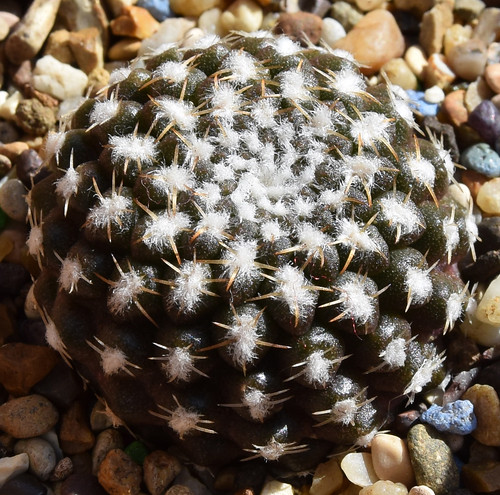
A photo of one of my plants
napina
First described as Echinocactus napinus in 1872

A photo of one of my plants - newly purchased and young
odieri
First described as Echinocactus odieri in 1849-50

Photo by Gunnar Hatletveit of his own plant
spectabilis
First described as Eriosyce spectabilis in 2011
tenebrica
First described as Thelocephala tenebrica in 1980
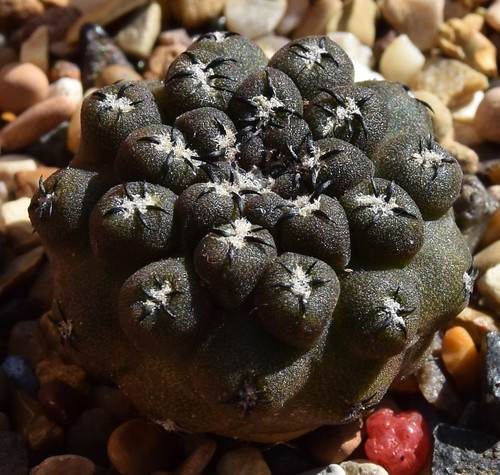
A photo of one of my plants - tenebrica v.fankhamser FK402 - newly purchased and young
Sub species, variants, synonyms etc
challensis - A subs of napina
duripulpa - A ssp of napina, now considered a syn of napina lembckei
fulva - A ssp of odieri, now considered a syn of napina glabrescens
glabrescens - A ssp of napina, but once a ssp of odieri
lembckei - A ssp of napina
malleolata - a syn of krausii
mitis - A subs of napina, or just a var.
monte-amargensis - Seems to be considered a var of odieri
riparia - a var of napina, possibly extinct in the wild
weisseri - A var of odieri
---------------------------------------------------------
Pyrrhocactus
Original German description by Berger, 1929: Kakteen.
Rippen gekerbt; Areolen groß, mit vielen pfriemlichen, steifen Stacheln. Blüten rötlichgelb; Fruchtknoten beschuppt, mit weißen Wollbüschelchen und manchmal mit Borstenstacheln.
Translation:
Indented ribs, large areoles, with many awI shaped stiff spines, reddish-yellow blossoms; ovaries scaly with white woolly tufts and sometimes with bristles
Type species seems to be strausianus.
Also included tuberisulcatus (now considered a subs of curvispinus), curvispinus and centeterius (now considered to be curvispinus).
andreaeana
First described as Neochilenia andreaeana 1959
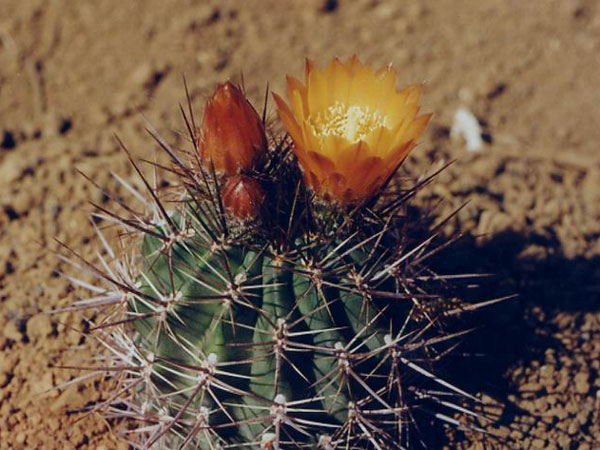
Photo by Joel Lode of a plant in a private collection
bulbocalyx
First described as Echinocactus bulbocalyx in 1937
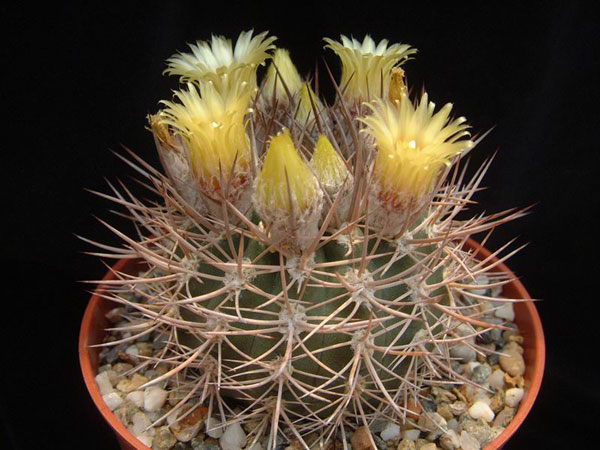
Photo by Tony Marino of their own plant
strausiana
First described as Echinocactus strausianus in 1901
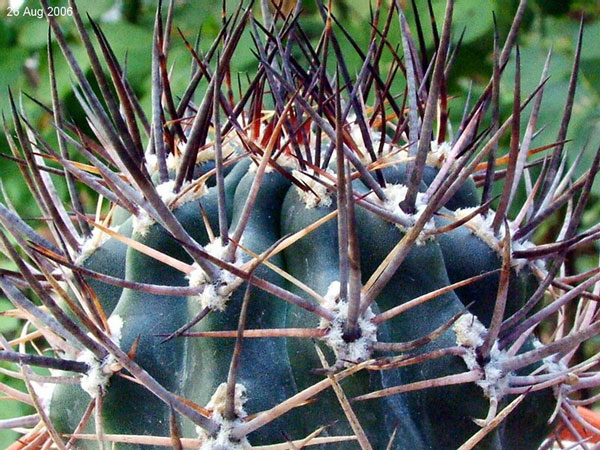
Photo by Süleyman Demir of his own plant
umadeave
First described as Friesia umadeave in 1929
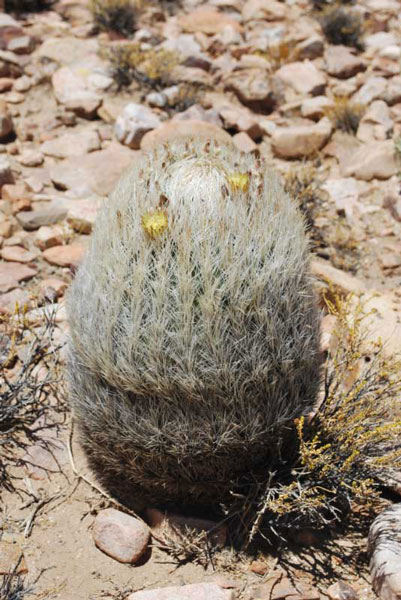
Photo by Tini and Jacob Wijpkema of a plant in habitat
villicumensis - Previously known as Neoporteria melanacantha. There is an entry in Cactus Guide, but no photo.
Sub species, variants, synonyms etc
backebergii - Seems to be considered a syn of strausiana
catamarcensis - Seems to be considered a syn of strausiana
dubia - Seems to be considered a syn of bulbocalyx
kattermannii - Seems to be considered to be a syn of andreaeana, or vis-versa
marayensis - A var of bulbocalyx
megliolii This seems to be considered a syn of bulbocalyx
melanacantha - Seems to be considered a syn of villicumensis
pachacoensis - A ssp of strausiana
sanjuanensis - Seems to be considered a syn of strausiana
setiflora - Seems to be considered a syn of strausiana
subaiana - Seems to be considered a syn of garaventae
volliana - Seems to be considered a syn of strausiana
vertongenii - Seems to be considered a syn of villicumensis
---------------------------------------------------------
Islaya
Original Latin description by Backeberg, 1934: Blatter Fur Kakteenforschung.
Genus plantarum raro proliferantium, apex Iana Ianuginosa-tomentosa obtectus. Aculei grisei, pungentes. Flos ex apice lanuginoso, luteus, subparvus. Fructus cavus, ruber, seminibus nigris opacis anulariter ordinatis.
Interpretation (i.e. not a true translation)
Rarely offsetting, very woolly areoles with dark spines turning grey with age. Flowers develop from younger aeroles amongst the yellow apical wool. Hollow fruit, red, ?seeds? dull-black and usually oval.
Type species is islayensis (formerley Malacocarpus islayensis).
islayensis
First described as Echinocactus islayensis in 1861

Photo by Tony Marino of their own plant
Sub species, variants, synonyms etc
bicolor - Seems to be considered a syn of islayensis
grandis - A ssp of islayensis
krainziana - Seems to be considered a syn of islayensis
lindleyi - Seems to be considered a syn of islayensis
minor - A var of islayensis
omasensis - Seems to be considered a subs of islayensis
---------------------------------------------------------
Rimacactus
laui
First described as Eriosyce laui in 1994. An unusual cactus of uncertain placement, potentially sitting in it's own genus/sub-genus of Rimacactus.
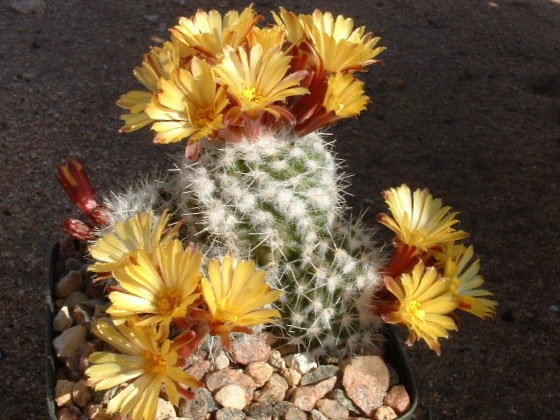
Photo by Juergen Menzel from his own collection












